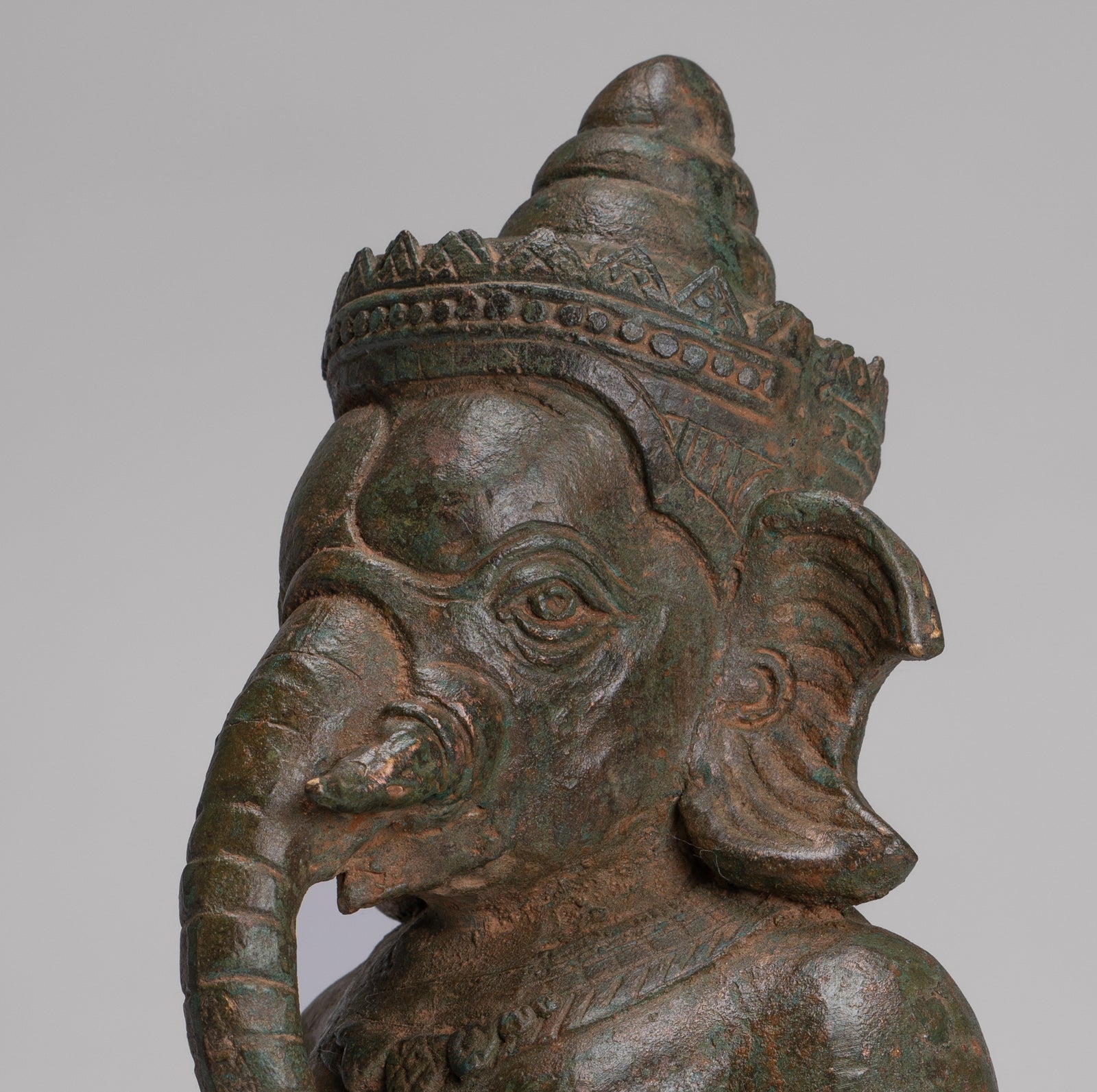
Ganesha and Moksha: The Remover of Obstacles on the Path to Liberation
Hinduism, one of the world's oldest religions, is rich with symbolism and a pantheon of deities, each representing different aspects of life and spirituality.
Among these deities, Ganesha, the elephant-headed god, holds a special place in the hearts of millions of devotees. Known as the remover of obstacles and the god of beginnings, Ganesha is deeply revered for his ability to guide believers on their spiritual journeys.
One of the ultimate goals in Hinduism is attaining moksha, or liberation from the cycle of birth and rebirth (samsara). Ganesha's role in this quest for moksha is profound and multifaceted, intertwining the practical aspects of daily life with the lofty aspirations of spiritual freedom.
Who is Ganesha?
Ganesha, also known as Ganapati or Vinayaka, is one of the most well-known and worshipped deities in the Hindu pantheon. Recognizable by his distinctive elephant head, Ganesha is often depicted with a round belly, four arms, and a kind, approachable demeanor. He is the son of Shiva, the destroyer, and Parvati, the goddess of love, fertility, and devotion. Ganesha’s unusual appearance is attributed to a variety of myths, the most popular being that he was created by Parvati and given life, only to have his original head removed and replaced by an elephant’s by Shiva.
Ganesha is venerated as the god of wisdom, knowledge, and new beginnings. His blessings are sought before embarking on any new venture, be it a business endeavor, a journey, or a spiritual practice. He is also known as Vighnaharta, the remover of obstacles, making him an essential figure in the lives of those seeking success and overcoming challenges.
Understanding Moksha
Moksha, or liberation, is a central concept in Hindu philosophy and theology. It represents the ultimate goal of human existence, which is to break free from the cycle of samsara, the endless cycle of birth, death, and rebirth. Achieving moksha means realizing one's true self (atman) and its unity with Brahman, the supreme, universal spirit. This realization brings about a state of eternal bliss and freedom from all earthly sufferings and limitations.
The path to moksha involves strict adherence to dharma (righteous living), karma (the law of cause and effect), and bhakti (devotion). It requires intense self-discipline, self-realization, and often the guidance of a guru (spiritual teacher). Moksha is not just about spiritual knowledge but also about overcoming ignorance, desires, and attachments that bind the soul to the material world.
Ganesha’s Role in the Quest for Moksha
Ganesha's significance in the pursuit of moksha can be understood through his various attributes and stories that highlight his divine interventions in removing obstacles and granting wisdom.
-
Remover of Obstacles: Ganesha’s primary role as Vighnaharta makes him an essential deity for anyone on the path to moksha. The spiritual journey is fraught with challenges and distractions, both internal and external. By invoking Ganesha, devotees seek his help in overcoming these hurdles, whether they be ignorance, ego, or worldly attachments. His blessings are believed to clear the way for a smooth and focused spiritual practice.
-
Symbol of Wisdom and Knowledge: Ganesha is also regarded as the god of intellect and wisdom. Attaining moksha requires a deep understanding of the self and the universe. Ganesha’s guidance is sought for gaining spiritual knowledge and insight. His large elephant head symbolizes wisdom and the ability to think big, while his small eyes represent concentration and focus—qualities essential for spiritual growth.
-
Protector and Guide: Many stories depict Ganesha as a compassionate guide and protector of his devotees. One such story is about Vyasa, the sage who wrote the Mahabharata. It is said that Ganesha served as Vyasa’s scribe, writing down the epic as Vyasa dictated it. This act not only highlights Ganesha’s intellectual capabilities but also his role in facilitating important spiritual and literary endeavors.
-
Destroyer of Pride and Ego: Ganesha’s elephantine form also serves as a reminder to overcome pride and ego, significant obstacles on the path to moksha. His humble demeanor teaches devotees to remain grounded and to practice humility and selflessness.
-
Symbolism of Ganesha’s Form: Every aspect of Ganesha's iconography holds spiritual significance. His large ears encourage us to listen more, his small mouth urges us to talk less, and his one tusk symbolizes retaining good while discarding the bad. These teachings are crucial for anyone striving for liberation, as they promote a life of virtue and mindfulness.
Worship and Practices
Devotees honor Ganesha through various rituals and practices that reinforce their commitment to overcoming obstacles and attaining spiritual growth. Common practices include:
- Ganesh Chaturthi: This is one of the most popular festivals dedicated to Ganesha, celebrated with great fervor across India. It involves elaborate rituals, prayers, and the immersion of Ganesha idols in water, symbolizing the cycle of creation and dissolution.
- Chanting Mantras: Reciting Ganesha mantras, such as "Om Gan Ganapataye Namah," is believed to invoke his blessings and remove obstacles.
- Meditation and Offerings: Devotees meditate on Ganesha’s form and attributes, offering sweets like modaks (Ganesha’s favorite) as a symbol of devotion and gratitude.
Conclusion
Ganesha’s influence on the spiritual journey towards moksha is both profound and pervasive. As the remover of obstacles, the god of wisdom, and the compassionate guide, Ganesha provides the necessary support and direction for devotees striving to achieve liberation.
By embodying the principles he represents, such as wisdom, humility, and perseverance, devotees can navigate the challenging path to moksha with greater ease and confidence.
In the vast tapestry of Hindu spirituality, Ganesha’s presence is a comforting and empowering force, reminding us that with the right guidance and effort, the ultimate goal of moksha is within reach.
Whether one is at the beginning of their spiritual journey or well along the path, invoking Ganesha’s blessings is a timeless practice that continues to inspire and uplift seekers across the world.


